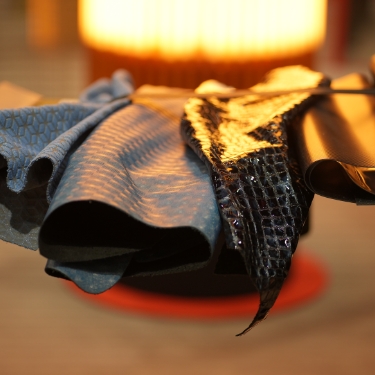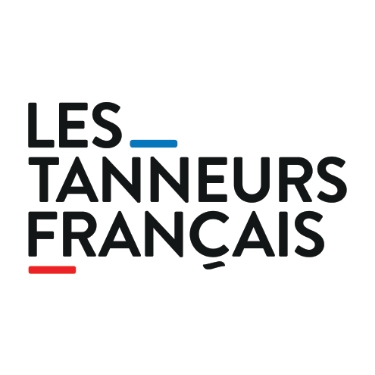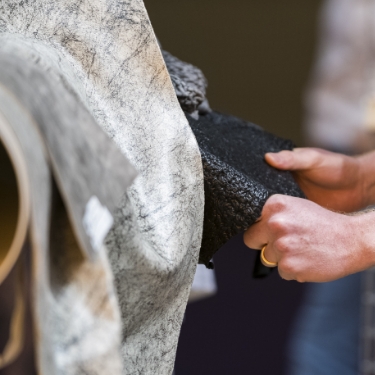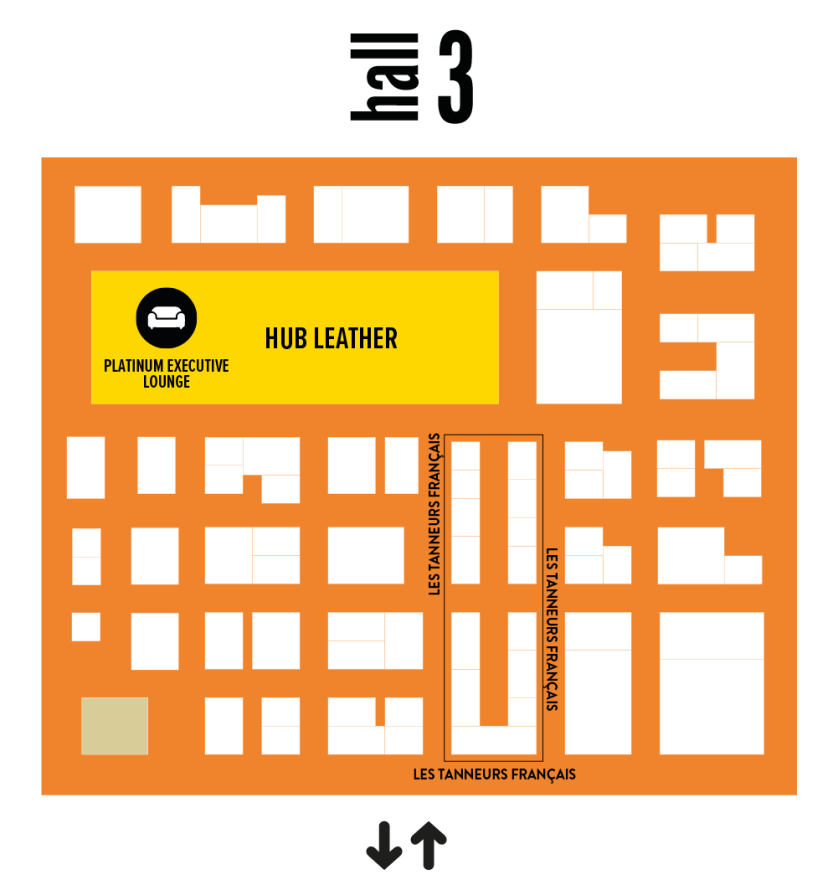Leather on the move at Première Vision Paris! The - Leather - Leather - Première Vision Paris
In its new edition from 6 to 8 February, Première Vision Paris is putting the spotlight on leather, with a new Leather Hub, a space dedicated to French tanners, as well as a new itinerary – 360° Leather: from farm to tech. PV Paris thus becomes the first show to tackle the whole spectrum of issues this ecosystem is facing: how to develop a product, how to distribute it and how to “revaluate” it. Fashion, agriculture, the future of the industry, environmental and technological issues: we tell you more about the leather offer at Première Vision Paris.
Inspiration and eco-innovations meet in the Leather Hub NEW

This new area designed for inspiration and innovation, highlighting the SS 25 season’s most remarkable leathers used in clothing, footwear and leather goods, and showcases the best uses, know-how, techniques and sustainable developments.
- Between 250 and 300 products
- Season and color information
- 12 “windows” for shoe and leather goods accessories
- Focus areas organised by use
- Presentation of the SS 25 leather-specific color range
- A focus on French tanneries
A dedicated space for French tanners NEW

French leather is world-renowned. The production of very high-quality finished leathers is more than ever a priority for these industrials, expert suppliers, working in the world of leather goods, footwear, saddlery, gloves, clothing, furniture, and interior design… The French Tanneries are committed to sustainable, socially responsible leather, in harmony with the environment and looking to the future.
Meet 14 French tanners present at the Première Vision show, in Hall 3, along with the FFTM (Fédération Française de la Tannerie Mégisserie).
- Alran S.A.S – Founded in 1903, this tannery has specialised in goat leather, in particular with its signature product: liégée-main goatskins
- Tannerie Arnal – Based in Aveyron since it was founded in 1880, Arnal Tannery specialises in the production of mineral, vegetable and mixed tanned cattle hides.
- Raynaud Jeune offers products ranging from basanes and fauves (for shoe soles) to an original range of products for footwear, leather goods and clothing.
- Sovos Grosjean – Based in the Vosges since it was founded in 1864, this tannery specialises in the production of vegetable and mineral tanned cattle hides.
- Tanneries Pechdo specialises in the production of soft leathers (cattle, goat and lamb sides) and technical leathers (washable, fire-, cold- and electricity-resistant).
- Tanneries Roux has been working calf and bull calf leather since it was founded in 1803. Initially serving the luxury footwear market, it extended to supply leather goods, watch straps, accessories and furniture.
- Tannerie Soler specialises in ostrich leather, tanned in mineral or metal free. The company also offers tanning services on small hides, such as sheep, goat or calf.
- ICTYOS – Cuirs marins de France is France’s youngest tannery. Based in the Lyon metropolitan area since 2018, the company works exclusively with marine hides (salmon, sturgeon, trout).
- Mégisserie Richard – Specialising in pure aniline lambskin, the tannery works with hides from good origins, such as French Aveyron and Spanish Entrefinos.
- Tannerie Cuirs du futur – In the 1990s, Manuel Saussol perfected an innovative technique for obtaining stretch leather. It is now the company’s iconic product: Magisco leather.
- Mégisserie Lauret S.A.S specialises in the production of lambskin. Initially destined for glove-making, the company’s products are now mainly used for ready-to-wear and luxury leather goods.
- Tannerie Rémy Carriat – Although the family business initially supplied the footwear market, it later moved into furniture and accessories, specialising in saddlery.
- Tannerie De La Molière – A family-run business, it began by working with sheep leather in a short circuit: the hides come from sheep in Béarn, and ewes in the Pyrénées or Aveyron.
- RELMA Guyard, Chesneau & Cie combines a century-old company specialising in luxury materials for bookbinding and a company specialising in the production of goat and sheep leathers.
These same experts also put their leathers and techniques at the service of the Creative Alliances exhibition, run by students at the Institut français de la mode. Together, they have created a collection of leather accessories to be found in Hall 3.

A new itinerary to cover all aspects of the leather industry
Today’s leather industry is facing new challenges that go well beyond the technical issues tanners and their partners have always managed to solve thanks to their extraordinary inventiveness and adaptability.
Expectations in terms of quality and volume, the preservation of lands and their ecosystems, and environmental and traceability issues are becoming permanent priorities for the leather industry. It is now crucial for all players in the supply chain—from production to distribution—to work together.

Given this context, PV Paris has decided to gradually integrate issues and solutions destined to shape tomorrow’s leather industry into its overall approach to the sector, including a look at new technologies, as well as the agriculture of the future, adapting to climate change and more.
With its new 360° Leather: From farm to tech itinerary, Première Vision is providing concrete solutions for leather buyers, environmental teams and the information systems departments of brands and design studios, by bringing together for the first time new kinds of industry players.
During the February edition, 5 companies specialising in agriculture, the environment and tech will present their solutions in the Leather Hub in Hall 3.
Join us from 6 to 8 February at Paris Nord Villepinte to discover the new PV Paris and source your collections for Spring-Summer 25.
